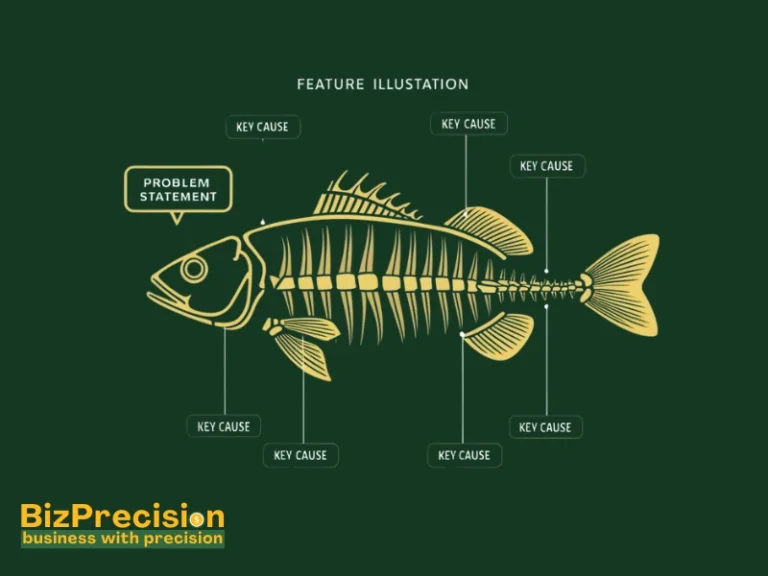Beat Resource Overallocation: Smart Management Tips
Resource overallocation means assigning more work to people or tools than they can handle in the time they have. It’s like trying to pour too much water into a glass that’s already full – something’s bound to spill over!
Did you know that 68% of projects fail due to poor resource management? According to the Project Management Institute’s 2023 Pulse of the Profession report, teams that use smart resource planning are 52% more likely to finish projects on time and within budget.
Poor resource planning leads to missed deadlines, burned-out teams, and unhappy clients. But there’s good news! Smart resourcing helps you match the right people to the right tasks at the right time. When done well, it keeps your team happy and your projects running smoothly.
This guide covers everything you need to know about resource management:
- How to spot the warning signs of overallocation
- Practical steps to balance workloads effectively
- Tools and techniques for better resource planning
- Ways to measure and improve your resource management
Understanding Resource Overallocation
Clear Signs of Resource Overallocation
When your team keeps missing deadlines, it’s often the first red flag of resource overallocation. A recent study by Wellingtone (2023) found that 73% of organizations that experienced frequent missed deadlines were dealing with resource overallocation issues.
Let’s look at the key warning signs:
- Missed Deadlines and Quality Issues Projects keep falling behind schedule, and work quality drops. Team members rush through tasks, leading to more errors and revisions.
- Team Burnout Indicators People look tired, take more sick days, or seem less engaged. The American Institute of Stress reports that 83% of US workers suffer from work-related stress, with heavy workload being the top cause.
- Budget Overruns Projects cost more than planned because you need overtime work or extra help to finish tasks.
- Communication Breakdown Patterns Team members miss meetings or stop sharing updates. They’re too busy putting out fires to keep others in the loop.
Common Causes of Resource Strain
Poor planning often leads to resource problems. Here’s what usually goes wrong:
- Poor Capacity Planning Many managers don’t know their team’s real work capacity. They assign work based on what needs doing, not what people can handle.
- Unclear Project Priorities When everything is “high priority,” nothing really is. Teams jump between tasks without finishing anything properly.
- Inadequate Resource Tracking Without good tracking tools, it’s hard to see who’s doing what. This leads to some people having too much work while others have too little.
- Scope Creep Impact Projects grow bigger than planned, but team size stays the same. This puts extra stress on already busy people.
The Hidden Costs of Overallocation
The true price of overallocation goes beyond missed deadlines:
- Financial Implications According to PMI’s Pulse of the Profession (2023), failed projects due to poor resource management cost companies an average of $480,000 per project.
- Team Morale Effects Burned-out teams are 63% more likely to take sick days and 2.6 times more likely to look for new jobs, says Gallup’s State of the Workplace report.
- Project Delivery Risks When teams are stretched thin, they make more mistakes. This leads to costly fixes and unhappy clients.
- Client Relationship Impact Late or poor-quality work hurts client trust. One bad project can damage relationships that took years to build.
Smart Resourcing Fundamentals
Resource Capacity Planning Basics
Good capacity planning starts with knowing your team’s limits:
- Workload Assessment Methods Track actual work hours vs. available hours. Include time for meetings, breaks, and unexpected tasks.
- Skills Matching Strategies Map team skills to project needs. Don’t assign advanced tasks to beginners or vice versa.
- Buffer Time Allocation Always plan for the unexpected. Add 15-20% buffer time to estimates for better planning.
- Peak Period Management Know your busy seasons and plan ahead. Hire temp help or adjust deadlines when needed.
Team Utilization Best Practices
Smart teams aim for balanced workloads:
- Optimal Utilization Rates The sweet spot is 70-80% utilization. This leaves room for innovation and handling surprises.
- Cross-training Benefits Train team members in multiple skills. This gives you more flexibility when someone’s overloaded.
- Resource Leveling Techniques Spread work evenly across the team. Move deadlines when possible to avoid work spikes.
- Flexibility Planning Build in ways to shift work between team members when needed.
Resource Forecasting Techniques
Good forecasting helps prevent future problems:
- Demand Prediction Tools Use past project data to predict future needs. Look for patterns in workload cycles.
- Capacity Forecasting Methods Calculate team capacity based on available hours, skills, and typical project needs.
- Risk Assessment Strategies Plan for worst-case scenarios. Have backup plans ready for key team members.
- Adjustment Protocols Set up clear steps for handling unexpected changes in workload or team capacity.
Preventing Resource Overallocation
Resource Management Tools
The right tools make resource management easier:
- Project Management Software Tools like Monday.com and Asana help track who’s doing what. They show when someone has too much work.
- Resource Scheduling Tools Float and Resource Guru are great for planning team schedules. They spot conflicts before they cause problems.
- Time Tracking Solutions Harvest and Toggl track real work hours. This helps you make better estimates for future projects.
- Analytics Platforms Power BI and similar tools turn project data into useful insights about team capacity.
Workload Balancing Strategies
Balance work fairly across your team:
- Task Prioritization Methods Use the MoSCoW method (Must have, Should have, Could have, Won’t have). It helps teams focus on what matters most.
- Resource Leveling Techniques Move non-urgent work to quieter periods. This prevents work spikes that burn out teams.
- Cross-team Collaboration Share resources between teams when possible. This helps handle busy periods better.
- Skills Development Planning Help team members learn new skills. This creates more flexibility in work assignment.
Early Warning Systems
Catch problems before they get big:
- Key Performance Indicators Watch utilization rates, overtime hours, and missed deadlines. They show when teams are struggling.
- Monitoring Protocols Check in with team members regularly. Create safe ways for them to say when work’s too much.
- Feedback Loops Get input from teams about workload. Listen to their suggestions for improvement.
- Intervention Triggers Set clear points for taking action. Step in when warning signs appear.
Implementation Framework
Assessment Phase
Start with a clear picture of where you are:
- Current State Analysis Look at how resources are used now. Note what works and what doesn’t.
- Gap Identification Find differences between what you need and what you have.
- Team Capability Mapping List everyone’s skills and experience levels. This helps match people to tasks better.
- Resource Audit Process Check if you’re using current resources well. Look for waste and inefficiency.
Planning & Setup
Build your new system carefully:
- Tool Selection Criteria Pick tools that fit your needs and budget. Make sure they work well together.
- Process Development Create clear steps for managing resources. Write them down so everyone knows what to do.
- Team Training Needs Plan how to teach new methods to your team. Include time for practice and questions.
- Timeline Creation Make a realistic schedule for changes. Don’t try to fix everything at once.
Execution Strategy
Put your plan into action:
- Phased Implementation Start small and build up. Test new methods with one team before going company-wide.
- Change Management Help people understand and accept new ways of working. Celebrate small wins.
- Communication Plan Keep everyone informed about changes. Use different methods to reach all team members.
- Success Metrics Define what success looks like. Track progress toward your goals.
Measuring Success
Key Performance Metrics
Track the right numbers to show progress:
- Utilization Rates Aim for 70-80% utilization across teams. Higher rates often lead to burnout.
- Project Completion Times Compare estimated vs. actual completion times. Look for improvements over time.
- Team Satisfaction Scores Happy teams are more productive. Regular surveys help track satisfaction trends.
- Client Feedback Data Good resource management leads to better client outcomes. Track satisfaction scores and repeat business.
ROI Calculation
Measure the benefits of better resource management:
- Cost Savings Analysis Track reduced overtime costs and fewer emergency hires. A well-managed team needs less crisis spending.
- Productivity Gains Note faster project completion times and higher quality work. These show better resource use.
- Quality Improvements Count fewer revisions and customer complaints. Better resource management means better work.
- Time Efficiency Metrics Measure reduced overtime hours and faster project delivery. These show your changes are working.
Continuous Improvement
Keep making things better:
- Regular Reviews Check progress every quarter. Look for new ways to improve.
- Adjustment Protocols Change plans when needed. Be flexible but keep your main goals in mind.
- Team Feedback Integration Listen to your team’s ideas. They often spot problems and solutions first.
- Best Practices Updates Stay current with new methods. Share what works well across teams.
Conclusion
Smart resource management is key to keeping your teams happy and projects on track. When you spot the signs of overallocation early, you can fix problems before they grow big.
Remember these key points:
- Watch for warning signs like missed deadlines and tired teams
- Use the right tools to track and plan work better
- Keep team workloads at that sweet spot of 70-80%
- Check in often and make changes when needed
Start small with these changes. Pick one or two things to improve first. As your team gets better at managing resources, you’ll see fewer late projects and happier people.
The best part? Better resource management pays off. Teams do better work, clients stay happy, and you spend less time putting out fires.






